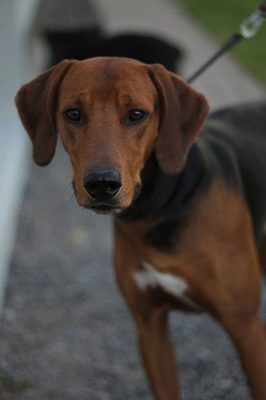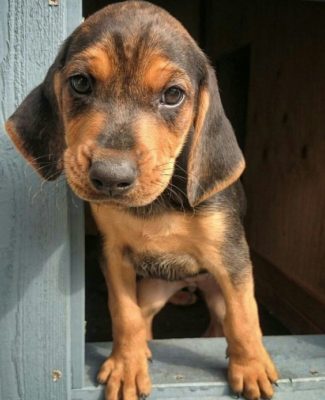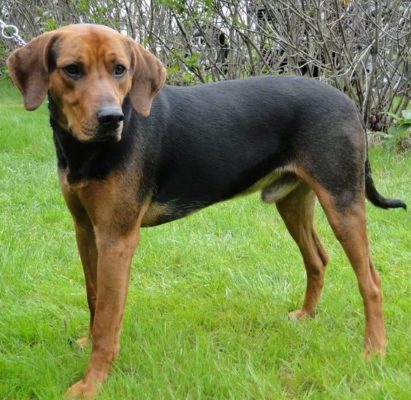Schillerstövare
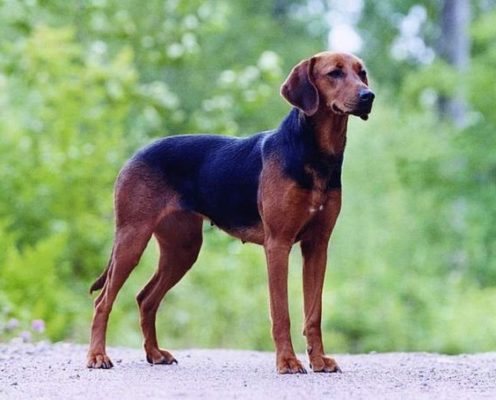
Representatives of this breed are poised; they keep their composure and calm. They are very loyal dogs who will faithfully serve the entire life of one owner. In general, hounds are friendly to children. But an extra control from the side does not hurt. Despite their openness and sociability, Schillerstövares are not too trusting of strangers.
Table of Contents
Breed Information
| Another Name | Schiller Bracke, Schiller Hound |
| Origin | Sweden |
| Height | Males 55-61 cm Females 49-57 cm |
| Weight | 18-25 kg |
| Fur | Short |
| Color | Cheprac: Cheprac on black on a brown or yellow-brown background |
| Lifespan | 12-14 years |
| FCI Classification | Scent hounds and related breeds |
| Group | Hunting dogs, dogs for children |
| Price | $600-1000 |
Breed Photos
Origin History
This dog breed was the result of crossing Swiss and British hounds in 1887. It was named after its creator, farmer-breeder Per Schiller. The Swedish Kennel Club first recognized the breed in 1907. In 1955 the Schillerstövare (Schiller Hound) received worldwide recognition from the Fédération Cynologique Internationale.
Appearance
The Schillerstövare is a harmoniously built dog of compact size. In the eyes can be read cleverness and intelligence. The color of the breed: a deep black cheprak on a yellow-brown background. The coat is short and close-fitting.
The hound’s head is elongated. The muzzle has a wide black nose bridge. The chest of the dog is deep, voluminous, down to the elbows. The paws are compact, with flexible toes and firm pads.
The ears of the Schillerstövare are high set, floppy, soft to the touch. The tail is set high but does not exceed the level of the back. Most often, it is curved.
Character
Representatives of this breed are poised; they keep their composure and calm. They are very loyal dogs who will faithfully serve the entire life of one owner. In general, hounds are friendly to children. But an extra control from the side does not hurt. Despite their openness and sociability, Schillerstövares are not too trusting of strangers.
Unlike humans, these four-legged dogs do not communicate with their congeners very readily. The reason for this is the use of dogs of this breed to hunt alone. To prevent hostility, early socialization of the pets is necessary. Hounds are positive to children and adolescents, especially if they give them a lot of time and attention.
Care
Because of its character and intelligence, the Schillerstövare is ideal for keeping at home. Because of its short and soft coat, it does not require any special care. Wiping with a wet towel or a hand is enough to remove loose hair. In the fall and spring, there is a heavy shedding period. At this time, it is necessary to comb the dog with a special brush at least twice a week.
Particular attention should be paid to the care of the hound’s floppy ears. All because of the propensity of this type of ears to otitis and other diseases. Periodically you should give your pet hard treats to prevent the development of the dental disease. Monitor the length of your dog’s claws and trim them if necessary.
Training
With regular training, the Schillerstövare is capable of learning. In general, the dog is quite obedient and clean. Representatives of the breed can sometimes get distracted; exercise requires a thorough approach. If you are not ready for that, leave it to a professional trainer. He will find an approach to your pet.
This breed needs long walks with strong physical and intellectual stimulation to maintain its hunting qualities. Make intellectual training a playful activity to keep your dog interested.
Common Diseases
Schillerstövares are animals with excellent health and immunity. Suppose we do not take into account the tendency to hip dysplasia. Unfortunately, this is a common problem in all large hunting and working dogs. It is worth paying close attention to the parents’ pedigree and studying dysplasia tests when choosing a puppy.
This breed is also prone to deafness if its ears are not properly cared for. Keep your dog’s eyes clean and free of debris. It is necessary to prevent infection.
Nutrition
A distinctive feature of the breed is that it is not prone to obesity. Do not be afraid to overfeed your pet. The dog’s diet should consist of foods rich in vitamins and minerals.
Fresh vegetables, fruits, dairy and fermented milk products, cereals and porridges, meat, and by-products are the best things to eat. If you don’t have time to prepare natural food, buy special food.
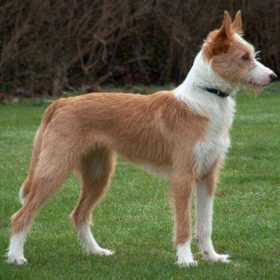 Portuguese Podengo
Portuguese Podengo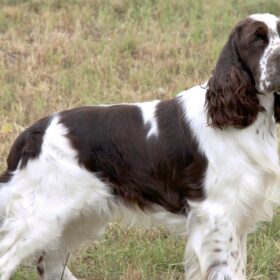 English Springer Spaniel
English Springer Spaniel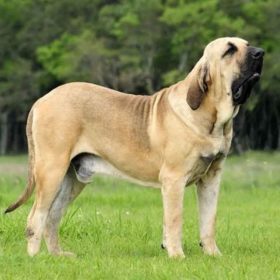 Fila Brasileiro
Fila Brasileiro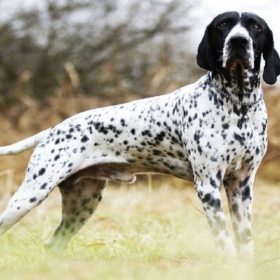 Braque d’Auvergne
Braque d’Auvergne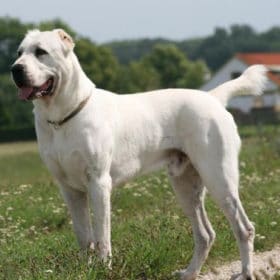 Central Asian Shepherd Dog
Central Asian Shepherd Dog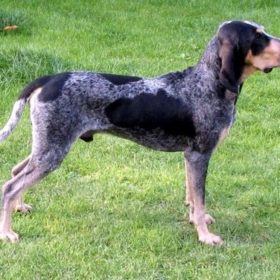 Grand Bleu de Gascogne
Grand Bleu de Gascogne